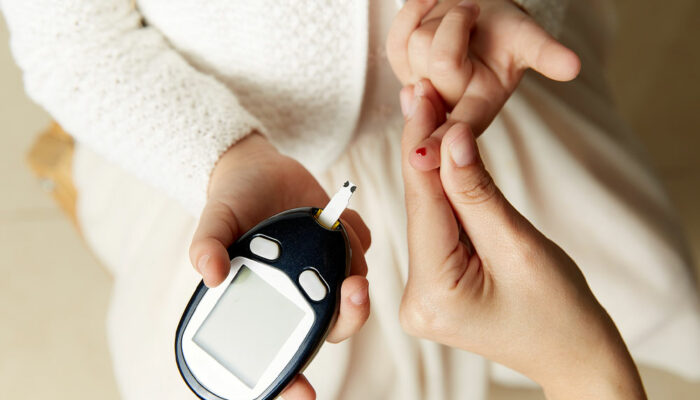20 bathroom cleaning mistakes to avoid

The bathroom, often considered the sanctuary of personal hygiene, is a space that requires regular and thorough cleaning. However, there are numerous common mistakes that individuals tend to make when tackling this essential chore. These mistakes not only hinder the effectiveness of the cleaning process but can also lead to long-term damage. In addition, these mistakes can lead to potential health hazards. Here are some prevalent bathroom cleaning mistakes and tips to avoid them.
Neglecting a regular cleaning schedule
One of the most significant mistakes individuals make is not establishing a consistent cleaning routine for their bathroom. Regular cleaning is crucial, as bathrooms are hotspots for germs and bacteria.
Tip: Create a cleaning schedule that designates specific days for bathroom cleaning. This ensures that it doesn’t get overlooked amid busy schedules.
Using inappropriate cleaning products
Choosing the wrong cleaning products is a common error. Some cleaners may be too harsh for specific surfaces, leading to discoloration or damage.
Tip: Always read product labels and use cleaners appropriate for specific bathroom surfaces, such as tile, porcelain, and glass.
Neglecting ventilation
Proper ventilation is important for preventing mold and mildew. Failing to turn on the exhaust fan or open a window during and after showers allows excess moisture to accumulate.
Tip: Invest in a quality exhaust fan and ensure it’s used whenever someone takes a shower or bath. Leave it running for a few minutes afterward for adequate ventilation.
Ignoring grout lines
Grout lines between tiles tend to collect dirt, grime, and mildew. Unfortunately, they are often overlooked during regular cleaning routines, leading to discoloration and long-term damage.
Tip: Use a mixture of baking soda and water or a specialized grout cleaner to scrub grout lines.
Using a single cleaning cloth for everything
Using a single cloth or sponge to clean various surfaces in the bathroom can spread germs rather than eliminate them. For example, using the same sponge for the toilet and then wiping down the sink can lead to cross-contamination.
Tip: Use color-coded cloths or designate specific cleaning tools for different bathroom areas. It minimizes the risk of cross-contamination.
Neglecting the toilet brush
The toilet brush is a vital tool for maintaining a clean toilet bowl. However, it’s often an overlooked item in bathroom cleaning routines. Failing to clean and disinfect the brush after each use can lead to the spread of harmful bacteria.
Tip: After each use, rinse the toilet brush thoroughly and let it air dry. Periodically, soak it in a mixture of water and disinfectant to ensure it remains germ-free.
Forgetting about shower curtains and liners
Shower curtains and liners can accumulate soap scum, mildew, and grime. Neglecting these areas can lead to an unsightly and unhygienic bathroom environment.
Tip: Regularly wash and disinfect shower curtains and liners according to the manufacturer’s instructions. It helps control soap scum and mold buildup.
Neglecting the showerhead
Shower heads can get clogged with mineral deposits, affecting water flow and pressure. Neglecting this component can lead to suboptimal shower experiences.
Tip: Periodically remove the shower head and soak it in vinegar and water to dissolve mineral deposits.
Overlooking light fixtures
Light fixtures in the bathroom can accumulate dust and grime, affecting both their appearance and the quality of light.
Tip: Dust light fixtures regularly and wipe them down with a gentle cleaning solution to maintain brightness and cleanliness.
Using abrasive cleaners on mirrors
Using harsh or abrasive cleaners on mirrors can lead to streaks and damage to reflective surfaces.
Tip: Use a gentle glass cleaner or a mixture of water and vinegar to clean mirrors for a streak-free shine.
Neglecting faucets and handles
Faucets and handles are high-touch areas that can harbor germs if not properly cleaned.
Tip: Wipe down faucets and handles regularly with a disinfectant to maintain a hygienic environment.
Allowing hair to accumulate
Hair buildup in drains can lead to slow drainage and unpleasant odors.
Tip: Use a drain cover or hair catcher to prevent hair from clogging the drain, and clean it out regularly.
Using excessive water
Using moisture while cleaning can damage areas like wooden cabinets or floors.
Tip: Use different tools and sponges for most cleaning tasks and avoid excessive moisture in sensitive areas.
Neglecting trash bins
Trash bins in the bathroom can become breeding grounds for bacteria if not regularly cleaned and sanitized.
Tip: Inspect bathroom trash bins regularly to prevent unpleasant odors and bacterial growth.
Using dirty cleaning tools
Dirty sponges, clothes, or brushes can spread germs rather than eliminate them.
Tip: Clean and disinfect the cleaning tools after each use to ensure they’re effective for future cleanings.
Ignoring the baseboards
Baseboards can collect dust and grime, affecting the overall cleanliness of the bathroom.
Tip: Wipe down baseboards regularly to maintain a clean and polished appearance.
Using too much cleaner
Using excessive cleaning products can lead to residue buildup and potentially damage surfaces.
Tip: Follow the manufacturer’s instructions for the appropriate amount of cleaner to use for each task.
Not checking expiration dates of cleaning products
Cleaning products have expiration dates, and using expired products may be less effective or harmful.
Tip: Regularly check the expiration dates on cleaning products and replace them as needed.
Rushing through the cleaning process
Rushing through cleaning tasks can lead to incomplete or ineffective results.
Tip: Take the time to thoroughly clean each bathroom area to ensure it’s appropriately sanitized and refreshed.
Failing to maintain fixtures and sealants
Ignoring maintenance tasks like re-caulking or fixing leaky faucets can lead to water damage and further issues.
Tip: Regularly inspect fixtures and sealants for signs of wear or damage to address them.
Devising a plan to eliminate these common bathroom cleaning mistakes will help one get a space as clean as possible.

